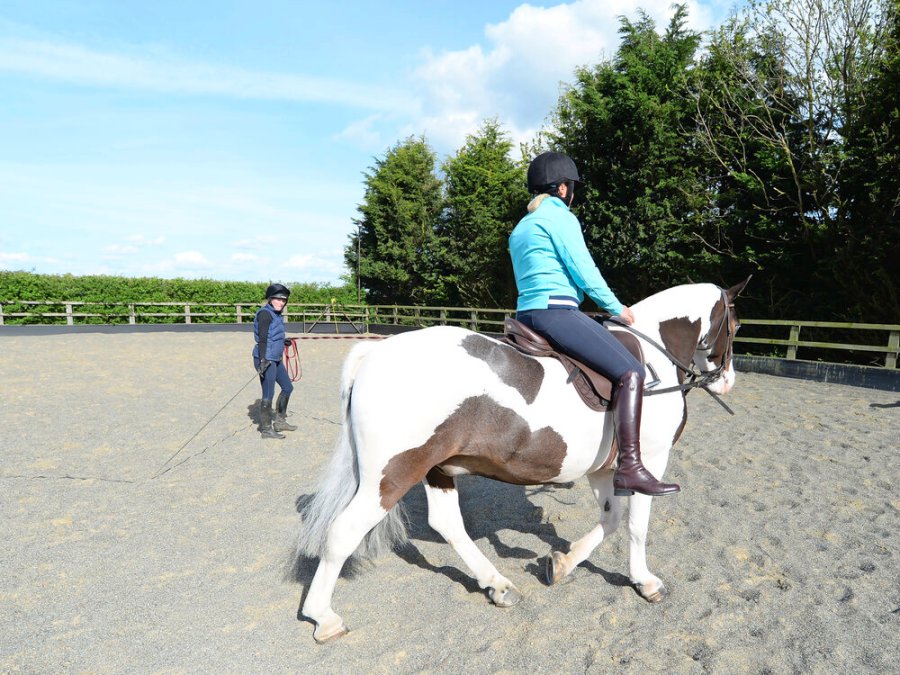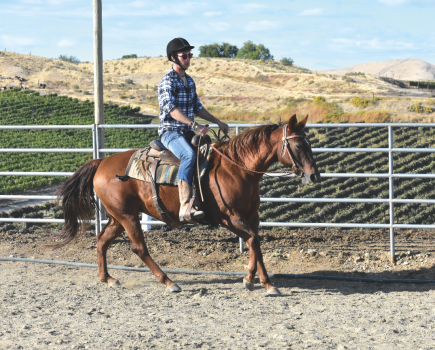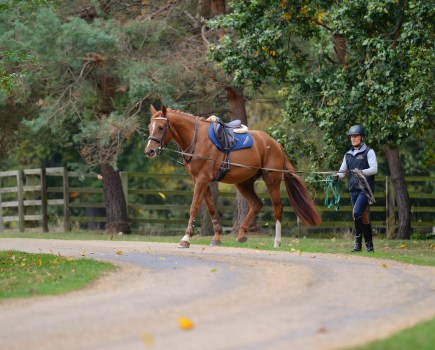Riding without stirrups boasts plenty of benefits for horse riders. It helps to improve your position by enabling you to develop a more secure seat and stronger lower leg, and what better time to give it a go than No Stirrups November?
You can do this by simply taking your stirrups away during a ride – if it is safe enough to do so – or having a lunge lesson, which biomechanics expert Russell Guire recommends all riders try, as it’s a valuable tool to you becoming a better rider.
“There’s so many benefits to having lunge lessons,” he says. “It improves the rider’s seat, balance and stability in the saddle. By taking away the reins and stirrups — I like to call these your ‘stabilisers’ — you have to focus on using your core to maintain a better position.”
These days, riding on the lunge isn’t used as much, but you’ll likely remember having a lesson or two if you learnt to ride several decades ago.
Russell shares three exercises you can try at home – you’ll just need a horse who is safe to ride on the lunge, and a friend or instructor to lunge you.
Before you begin
After warming up off the lunge, take your feet out of the stirrups and cross them over the front of your saddle so they sit just in front of your horse’s withers.
Spend a few minutes in walk with your legs hanging loose, and concentrate on feeling the movement of your horse and that you’re sitting equally on both seat bones.
Exercise 1: Knees away
This will improve your feel in the saddle and relax your knees. Note which side is easier and which side you find harder, as this will indicate the side you tend to grip with – this gives you something to focus on in the future. If you are finding it difficult to balance in walk, do this in halt instead.
How to ride it:
- In walk, concentrate on finding a neutral position with your pelvis.
- Lift your right knee up, out and back down in a circular motion.
- Repeat this with your left leg.
- Notice any differences you feel – is one side easier than the other?
- Repeat this five times on each leg. Now rest, let your legs hang loose, and see if you can feel a difference from when you started.
- Repeat this on the other rein, and see if you notice any differences.
Exercise 2: Thigh burner
This mobilises your hips and engages your core. It’s quite difficult, so don’t do too much at once.
How to ride it:
- In walk, lift your right knee up and away from the saddle.
- Rotate your knee as if you’re pedalling a bike. Remember to sit up tall – don’t tip forward.
- Start with five rotations, and then have a rest.
- Repeat this exercise on the left leg. Is it easier to sit up tall on one side rather than the other? This could indicate that one hip is stiffer than the other.
Exercise 3: Upper body workout
For this exercise, it’s not about how quickly you can do it. Think quality — do the exercise slowly and stay in control of the movement.
The aim is for your body to remain in the correct position in the saddle as you do them. It’s a great way to work on improving your balance and using your seat.
How to do it:
- Before you begin, tie your reins in a knot and let your arms hang down by your sides.
- Lift both arms away from your sides so they’re parallel to the ground.
- Slowly rotate from your waist to the left, then straighten.
- Now rotate to the right and straighten.
- Concentrate of keeping them level with your shoulders as you turn – don’t let them drop or raise up.
- As you turn, notice if you can go further one way than the other.
- Repeat this half a dozen times before resting.
Russel’s top tips for No Stirrups November:
- Keep a lunge lesson to a maximum of 20 minutes in length.
- Warm up off the lunge first.
- You may want your horse to wear side reins to encourage them to maintain a consistent outline. Once attached, your horse’s nose should be slightly ahead of or on the vertical — ask an instructor for help if you need it, because its important side reins are used correctly.
- Only try these exercises on a horse who lunges well and is fit enough for the session. Your horse has to be happy with you moving about in the saddle while being lunged, too.
- Make sure the person lungeing you is experienced too, and able to give feedback on your position.
Meet the expert: Russell Guire manages Centaur Biomechanics, which specialises in horse and rider performance analysis. Russell works with British Equestrian, offering performance analysis to horses and riders on both the World Class Programme and Team GB.









